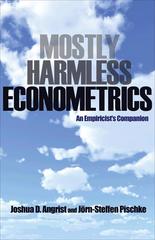Answered step by step
Verified Expert Solution
Question
1 Approved Answer
on p.65 (22nd ed.) or p.73 (21st Ed.) Suppose the total demand for wheat and the total supply of wheat per month in the Kansas
on p.65 (22nd ed.) or p.73 (21st Ed.) Suppose the total demand for wheat and the total supply of wheat per month in the Kansas City grain market are as follows: Thousands of bushels demanded Price per bushel Thousand of bushels supplied 85 80 75 70 65 60 $3.40 3.70 4.00 4.30 4.60 4.90 72 73 75 77 79 81 a . What is the equilibrium price? ( $ _____ ) What is the equilibrium quantity? ( _______ ) Fill in the surplus-shortage column. Now use it to explain why your answers are correct: At the immediately lower price of $3.70, there is a ( shortage, surplus ) of ( ______ ) bushels. At the immediately higher price of $4.30, there is a ( shortage, surplus ) of ( ______ ) bushels. b. ( exrtra pts) Graph the demand for wheat and the supply of wheat. Rough one is good. Be sure to label the axes of your graph correctly. Label equilibrium price P and the equilibrium quantity Q. c. Why will $3.40 not be the equilibrium price in this market? Why not $4.90? _________________________________________________________________________ _________________________________________________________________________ _________________________________________________________________________ d. "Surpluses drive prices up; shortages drive them down." Do you agree? Or not? Explain. _________________________________________________________________________ _________________________________________________________________________ _________________________________________________________________________
Step by Step Solution
There are 3 Steps involved in it
Step: 1

Get Instant Access to Expert-Tailored Solutions
See step-by-step solutions with expert insights and AI powered tools for academic success
Step: 2

Step: 3

Ace Your Homework with AI
Get the answers you need in no time with our AI-driven, step-by-step assistance
Get Started


